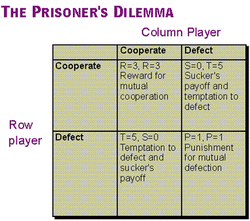Alignment
Aligning with other states (creating an alliance) = common strategy to provide security and reduce threats, because you become less vulnerable.
Alignment involves tradeoffs and costs because you become pressured in to their problems. (Their problems become your problems)
Alignment involves tradeoffs and costs because you become pressured in to their problems. (Their problems become your problems)
vs. Non-Alignment
A foreign policy strategy in which a state does not get involved with any side, and therefore, maintains some degree of autonomy.
Security Dilemma

Due to the anarchical society we live in, state A will try to increase it's security in various ways, such as making alliances or improving their military capabilities. The dilemma is that this may cause state B and others to act in a similar ways, leading to uncertainty and increasing tensions, which results in conflict that these states did not want in the first place.
The Four Functions of Force
1. Defensive
2. Deterrent
3. Compellent
4. "Swaggering"
- The deployment of military power in hopes of two things - to hinder an attack and to minimize damage to oneself if attacked.
2. Deterrent
- The deployment of military power in order to prevent an enemy from doing something that you do not want him to do, or that the enemy may be tempted to do, by threatening that there will be extreme punishment if they do so.
3. Compellent
- The deployment of military power in order to stop an enemy from doing something that they have already started, or to get the enemy to do something that they have not yet begun.
4. "Swaggering"
- The deployment of military power for reasons other than defense, deterrence, or compellence. Examples may be displaying one's military power, or building a prestigious weapon, in order to show off prestige.
Prisoner's Dilemma
Used in game theory to explain why two states may not cooperate, even if it is in their best interests to do so.
State A will try to benefit more than State B, and State B will try to benefit more than State A, but by doing so they will both gain less rather than if they had cooperated and shared the advantages.
State A will try to benefit more than State B, and State B will try to benefit more than State A, but by doing so they will both gain less rather than if they had cooperated and shared the advantages.



